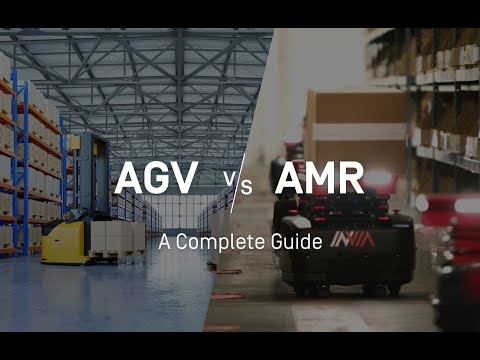Are you looking to enhance the efficiency and productivity of your warehouse operations? Look no further! In this article, we will delve into the world of industrial automation robots and explore how AGVs (Automated Guided Vehicles) and AMRs (Autonomous Mobile Robots) are revolutionizing the logistics and warehouse automation industry.
Industrial automation robots have become increasingly popular in recent years, as businesses seek innovative solutions to streamline their operations. AGVs and AMRs are two types of robotics that have emerged as game-changers in the field.
AGVs are robotic vehicles that navigate with the help of pre-defined routes or markers. These vehicles are equipped with sensors and software that enable them to move safely and efficiently within a warehouse environment. AGVs can perform a wide range of tasks, such as material handling, transportation, and storage. They are particularly useful in industries where repetitive tasks are involved, as they can carry out these tasks with precision and consistency.
On the other hand, AMRs are mobile robots that have the ability to navigate autonomously without the need for pre-defined routes or markers. These robots use advanced technologies like LiDAR (Light Detection and Ranging) and SLAM (Simultaneous Localization and Mapping) to map their surroundings and navigate through the warehouse. AMRs are highly versatile and can adapt to changes in their environment, making them ideal for dynamic and unpredictable warehouse settings.
Both AGVs and AMRs offer numerous benefits for warehouse automation. By utilizing these robotic solutions, businesses can significantly increase their operational efficiency. These robots can work around the clock, eliminating the need for human workers to perform repetitive and monotonous tasks. This not only improves productivity but also reduces the risk of human error.
Furthermore, AGVs and AMRs can optimize space utilization within the warehouse. These robots are designed to navigate through narrow aisles and tight spaces, allowing businesses to maximize their storage capacity. They can also transport goods quickly and accurately, reducing the time taken for material handling and improving overall throughput.
In addition to their efficiency and versatility, AGVs and AMRs also contribute to a safer working environment. With their advanced sensors and collision avoidance systems, these robots can detect obstacles and avoid collisions, preventing accidents and injuries. This promotes a safer workplace and reduces the risk of damage to goods and equipment.
As the demand for warehouse automation continues to grow, AGVs and AMRs are expected to play a crucial role in the future of logistics. These robotic solutions offer a cost-effective and scalable approach to automation, allowing businesses of all sizes to benefit from increased efficiency and productivity.
In conclusion, AGVs and AMRs are transforming the warehouse automation industry with their advanced capabilities and versatility. These industrial automation robots provide businesses with a competitive edge by optimizing operational efficiency, maximizing storage space, and ensuring a safe working environment. As technology continues to evolve, AGVs and AMRs will undoubtedly revolutionize the way warehouses operate.
Check the coil packing solution with a leading manufacturer for the professional solution just here: [link to manufacturer's website]. Industrial Robot
"Efficient Warehouse Automation: Comparing AMR and AGV Robotic Solutions for Industrial Automation"






